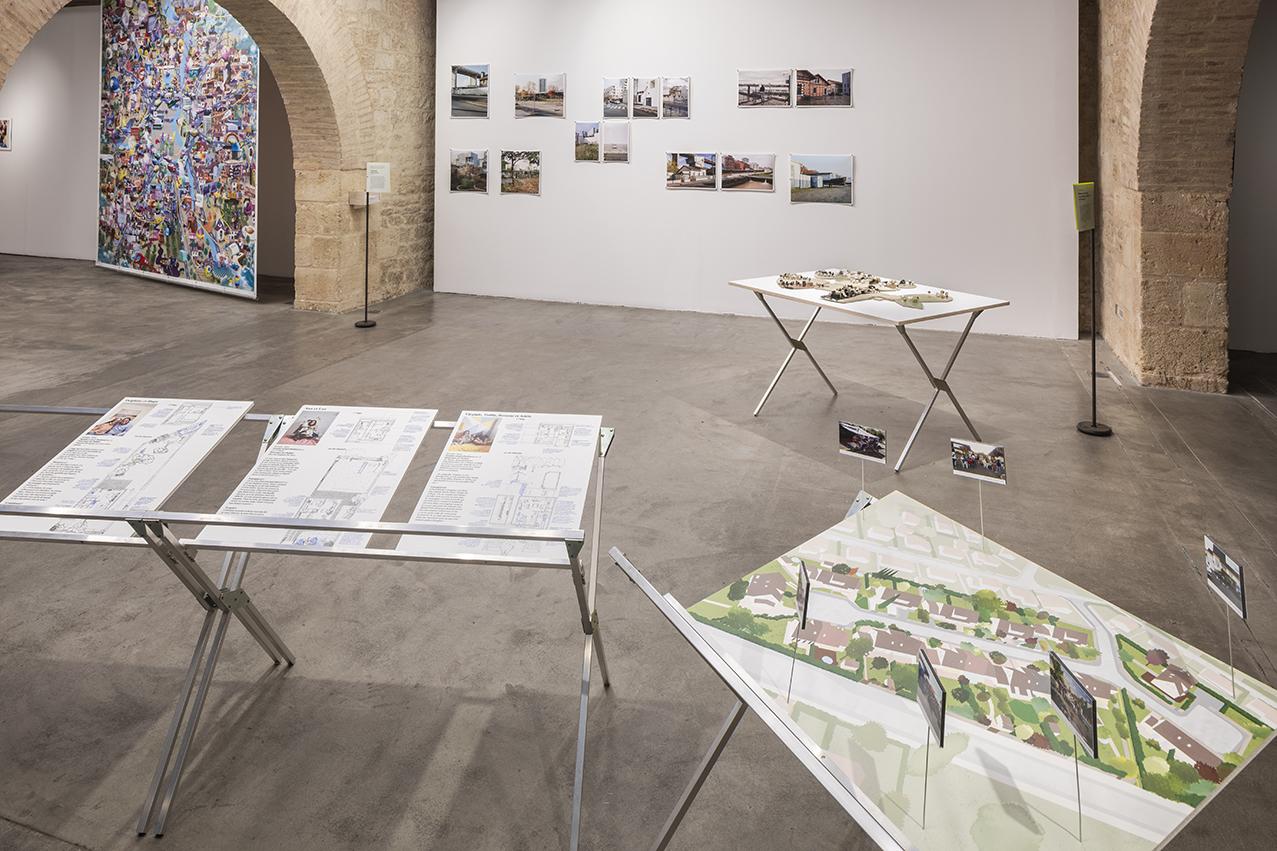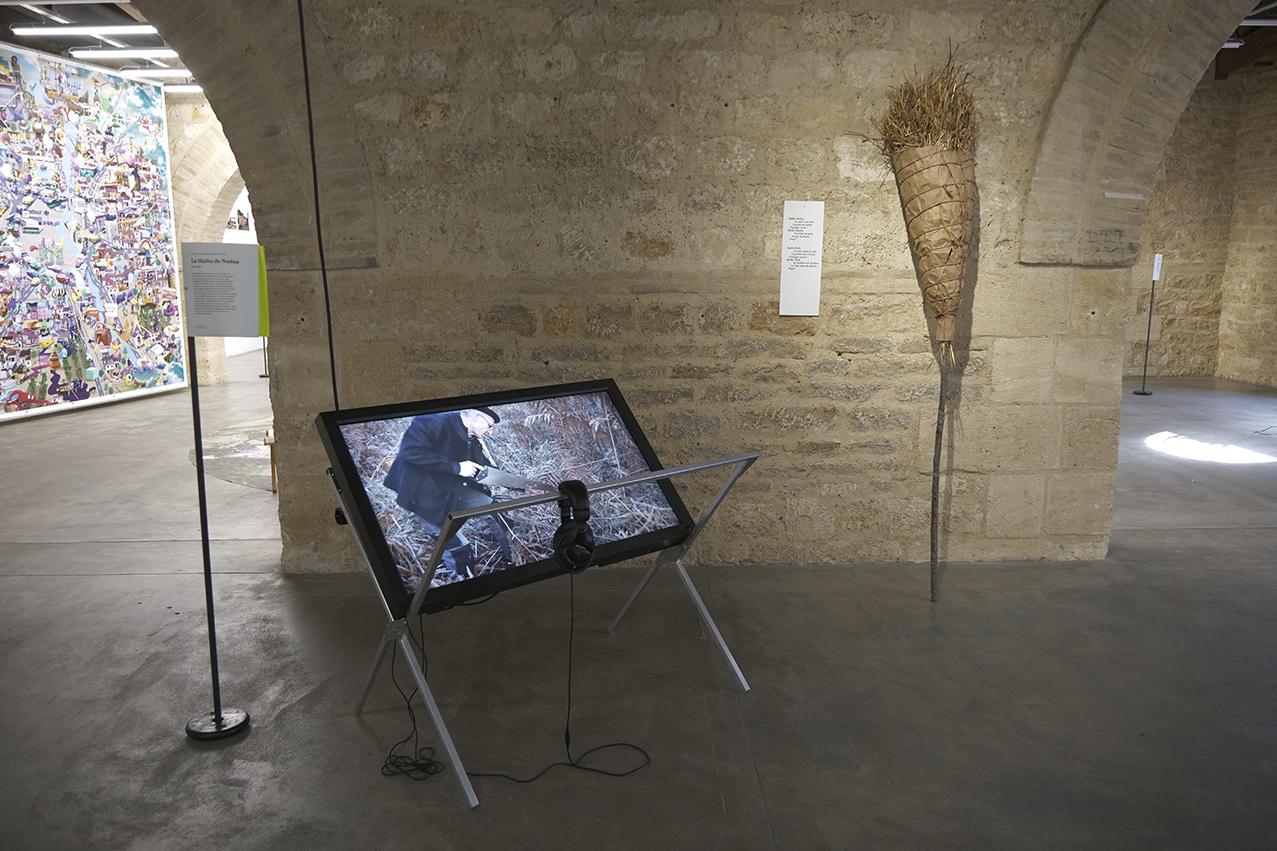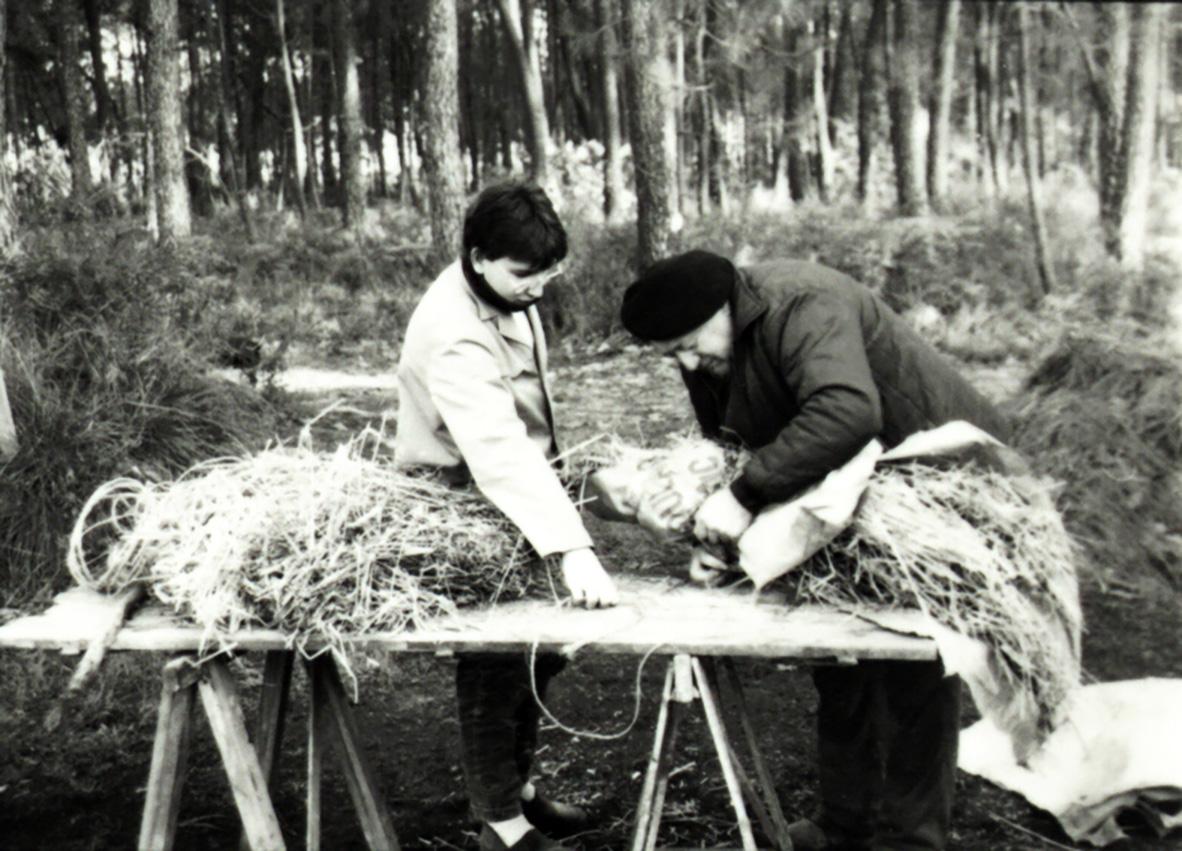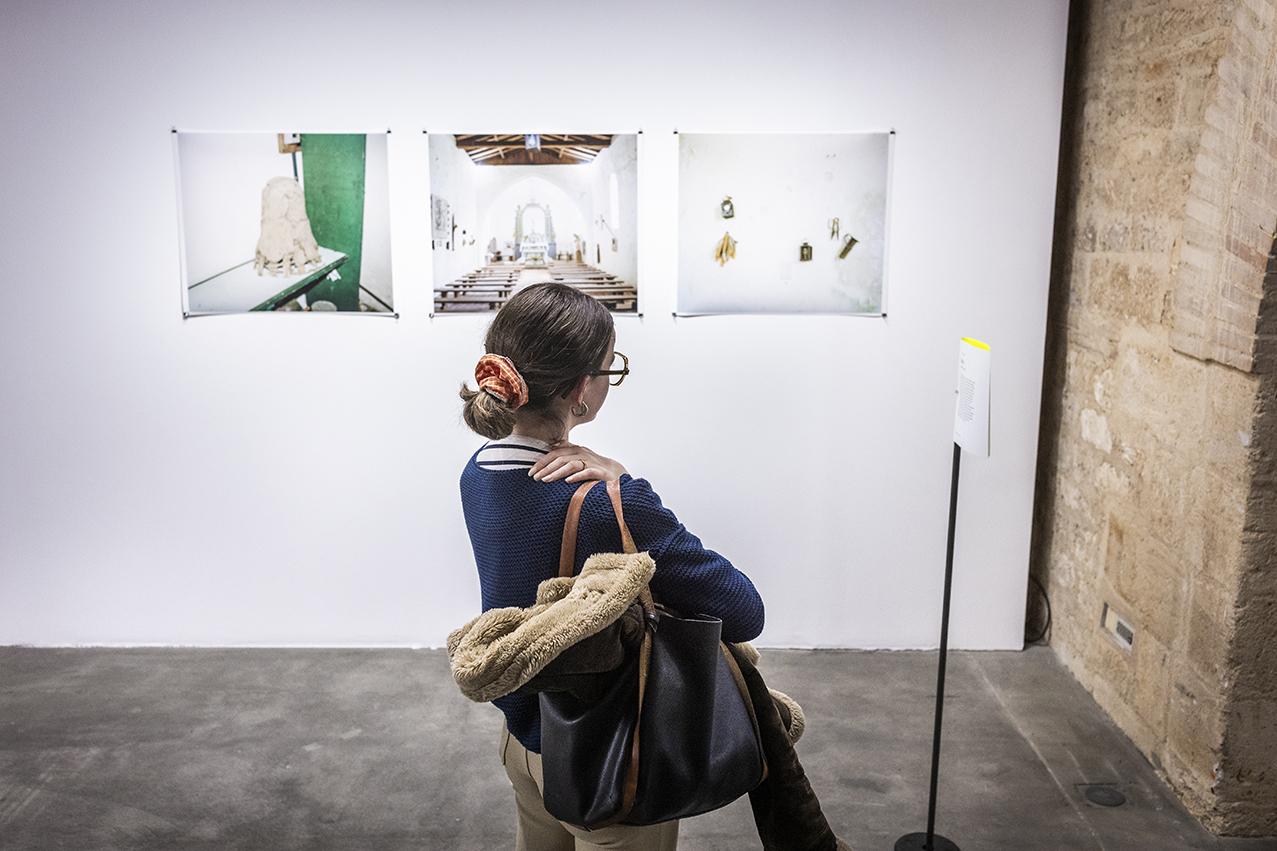Fanny Léglise. How would you paint an “anthropological” portrait of the population of the Gironde region?
Éric Chauvier. We could use the gentrification1 bias. I've been working for a long time on the tipping point between gentrification in downtown Bordeaux and impoverishment on the outskirts. I've been studying developments in the city since 1989, when I arrived as a student. The price per square meter has risen enormously in recent years, and lifestyles have changed too, particularly with the arrival of the high-speed train line.
This new mobility has led to a gentrification of the city and a phenomenon of mutation, where the working class finds itself beyond the second ring - in this territory we call the “peri-metropolitan”.
Peri is what's around, when you're in places that no longer benefit from the metropolis' economy. Peri-metropolitan is different from peri-urban, which is made up of the first and second rings around the historic city, to which they are linked by mobility, cultural programming, the economy and so on. Today, several communes find themselves far away from the city in this way. For example, Sainte-Foy-la-Grande or Castillon-la-Bataille are relegated to a very long distance from the metropolis, which seems irremediable. The further away we get, the more I observe feelings of “abandonment”. We realized this with the “Gilets jaunes” movement in 2019-2020. Bordeaux, a peaceful city, is seeing breakage, violent movements, with a lot of resentment in the streets. Which seems normal: most of these people used to live in Bordeaux's former working-class neighbourhoods before being excluded by gentrification.
FL. If Bordeaux respects its social rental housing quotas, when you talk about the working classes being relegated far from the city, isn't it the purchase price that's to blame?
EC. Indeed, there are still working-class neighbourhoods like Grand Parc and Bacalan. However, others, such as Belcier, the historic railroad workers' district, are being transformed into tertiary sectors for Parisians who will be there only occasionally. Activities have changed, and Bordeaux's population is now organized according to what American theorist Richard Florida2 calls the “creative class”. Architects, people in the cell phone industry, lawyers, for example - these high-income professions make up a creative class that is expected to contribute to Bordeaux's economic activity and attractiveness. As a reminder, Richard Florida proposes a model for urban growth that aims to overcome the end of industrial capitalism in favour of a “qualitative” tertiary sector.
This explains why Bordeaux has become a city of leisure, well-being, canelé, fine wine and, in a word, an art of living. The problem is that if you drive 50 kilometres, in the Blayais for example, you'll find people talking about punitive ecology. For example, the famous ZFEs3, which are about to be cancelled, are seen by people in the center as part of the ecological transition, whereas they turn out to be a calamity for people on the outskirts who depend on their cars.
It's a succession of situations that creates increasingly irreconcilable conflicts. I see the Bordeaux region mainly in terms of fractures, without being pessimistic or declinist.

Extensive farming has transformed the landscape and the people who live there. If we take the example of the A89, on the section between Saint-Seurin and Périgueux, it is coupled with a departmental road that serves communes that are suffering terribly. It's an over-signified situation. To create a major infrastructure that will enable people to get quickly from point A to point B –for those who can afford to pay the toll– we've created a corridor of socio-economic desertion, with a population whose vote is slowly but surely moving towards the Rassemblement National. These are people who feel a strong resentment towards urban dwellers, because they are the comet tail of this metropolization movement. Christophe Guilluy4 has demonstrated this. Racism and xenophobia stem from the confrontation between the city, which is both wealthy and considered cosmopolitan, and rural areas, which feel left behind. I'm overstating the case, but it's a game of stereotypes in which those who live in the countryside feel they're lagging the “privileged” who live in the city. It's also a form of relegation, even social segregation, which is directly attributable to the metropolitan growth model.
FL. How does this attraction of the creative class to Bordeaux work,
does it stem from a political desire?
EC. It's an injunction, a model. In the 1990s, Seattle was the city of Nirvana and Kurt Cobain. Richard Florida observed a certain youthfulness and despair in the wake of the industrial economy’s decline. He then imagined a rich, desirable, open city, with a creative population of Gypsies and bohemian bourgeois, producing criteria: a certain number of tattoo artists, macrobiotic stores and so on. And it was a self-fulfilling prophecy. The image is Patti Smith, a very urban image whose rejection, the opposite, laid the foundations for the Trumpist electorate, and in France for that of the RN.
FL. Is this a harbinger of things to come for the Bordeaux microcosm?
EC. We're in the creative class model too, but with “hyper-places5”, endowed with cultural particularities. The port past, gastronomy, wine, proximity to the ocean, the Arcachon Basin and so on. It's an imagery created to attract the creative class, based on high economic and cultural capital. On the other hand, in the 1990s, Bordeaux's history, its port past, at the Bassins à flots for example, was still present. There were still secondary and industrial activities. When Bordeaux Métropole was created, the last factories, such as Soferti, were evacuated. The Bec d'Ambès is now home to high-risk factories and oil and gas storage sites. But the people of Bordeaux are unaware of this territory, which is the unthought-of, the repressed part of the metropolis.
We've created a city dedicated to the “creative tertiary”, which is necessarily exclusive. In the city of the 1980s and 1990s, many more social classes intersected, and the gaps were smaller. If you think of the difference today between a squatter in a gypsy camp in Bacalan and a Qatari tourist visiting the Grand Hôtel de Bordeaux... One of the few places where social classes intersect is the Miroir d'eau, which is a success in its ability to welcome very different people: women, joggers, young people from the Triangle d’Or6 and the suburbs. No matter how much we try to homogenize the city, there are still occasional intersections with people who no longer live there. Place de la Victoire is another good example. Covid gave us a glimpse of the other side of the city, and made unaccompanied minors visible. The creative class was parked at home, while those who remained outside were the forgotten, the invisible.
FL. And the little jobs we don't see, whose role has grown during the Covid, Uber eats for example...
EC. They come together in informal meeting places for the invisible. More than ever, the city needs precarious workers to ensure its economy.
FL. Where is the peri-metropolitan area today?
EC. Far from the metropolis, whether this distance is geographical or symbolic. If we draw a parallel with Paris, we can consider that a whole part of the Paris suburbs also belongs to this peri-metropolitan area, in the sense that there are no longer any facilities, no shops, no metropolitan amenities, just like in a small town in the Lot-et-Garonne.

It lacks urbanity, human encounters –especially when you buy your pizza or baguette from a vending machine– and the spectacle of the city. The vending machine seems to be the final stage in the end of urbanity. Some markets are disappearing, and with them social ties. At the same time, some mayors are fighting to breathe new life into their outlying towns, as is the case in La Réole, for example, 50 minutes by highway from Bordeaux, which is looking to welcome families. Not all towns have this card to play, that of being able to position themselves as a ripple effect of the creative city of Bordeaux. Many wealthy Parisians have come to live in Bordeaux, and the story goes that the Bordelais sold them their apartments to buy mansions in the countryside. This may be a myth perpetuated by real estate agents.
FL. While we can imagine that most of those mentioned will not come to see the exhibition at arc en rêve, we can mention a number of contributors who set out to encounter a form of otherness: Mark Lyon, who asked 34 young people what they believed in; Annaëlle Terrade, who recorded the appropriations made by inhabitants in their homes in a hamlet of Ambarès-et-Lagrave; Patric La Vau, who filmed the survival of a peasant rite; and Pol Gallo, who photographed agrarian tools placed alongside religious images in a small church near Hostens.
EC. These are the people who have taken it upon themselves to observe the peripheries, integrating a possible negativity, and who have accepted to cross the gulf that separated them from the peri-metropolitan populations. It's very interesting to come face to face with them.




When I worked on the rehabilitation of the Beutre7 transit housing estate, led by architect Christophe Hutin, we realized that we were going to have to adapt our representations and methods to a population that felt forgotten by the metropolis. We had to be willing to go to the heart of this fracture, and take the time to tame each other. We had to enter a relationship, avoid imposing our stereotypes and allow the encounter to take place. It's a necessity, before these two worlds stop talking to each other.
Art has a key role to play, as does architecture. Art must ask itself questions about its relationship with the land, while accepting that there may be conflicts.
At Beutre, it's all been a question of adaptations and open-ended discussions for five years. For example, at one point there was talk of using Majorelle blue facades, but this was totally rejected by the residents, who saw it as a stigma, whereas they wanted to be “like everyone else”. In the end, Christophe Hutin succeeded in creating something of the highest quality, which would not have been possible without this long and often conflicting process of discussion.


FL. Having sketched a portrait of urban and perimetropolitan inhabitants, what can you say about suburbanites?
EC. Some geographers speak of clubbization8. I campaign for different suburban areas, rich in their own unique cultures and histories. Saint-Médard-en-Jalles, for example, is a place where many aerospace engineers live, where eight small villages have come together to form a town of 35,000 inhabitants. Blanquefort has a history of market gardening and wine production. That's another story. These histories influence the forms of suburbanization. When we talk about the representation of the habitat, we end up talking about its inhabitants. It's a very strong imaginary. All the Netflix series on suburbia overlap with the imaginary of Saint-Médard-en-Jalles! Being a teenager there is a lot more interesting than in downtown Bordeaux, because nothing is codified. You can take over any site and transform it, it's a great heterotopian9 terrain. The suburbs are rich in random zoning and strange arrangements, as shown by Yvan Detraz of Bruit du frigo. Housing estates rub shoulders with cultural wastelands, former industrial zones and shopping malls, producing new imaginaries.

If you walk around these places, it's fascinating. A relationship with the world based on risk-taking, limits and “liminarity”, as we say in anthropology, i.e. losing oneself to find oneself again, is possible in the suburbs, whereas it isn't in the permanent control of the city and its cameras. I wrote about this in the book Contre Télérama10, following the magazine's front-page warning about “ugly France”. While the suburban model is an ecological aberration, particularly with the artificialization of land, when you live there, everything changes. That's why American TV series have taken to the suburbs, and why great writers like Thomas Pynchon have written about them. The territory of the suburbs is much more mysterious than that of the city
FL. How about Bordeaux-centre?
EC. Bordeaux has become a place of mass tourism, with little trains and tourists, their eyes riveted on geolocation applications. Like Time Square, Bordeaux has become a hyper-place, meaning that you already have all the images in your head. When we come here, it's to make sure they're there: the Pont Levant, the Cité du Vin, Le Grand Théâtre, Les Quinconces, etc. It's a bit of a caricature of the city. It's a bit of a caricature, because Bordeaux's identity also lies in the uniqueness of its suburbs, outside the tour operator and tourist stories. Here, we find the names of shipowners, traces of port activity and, ultimately, counter-stories and other accounts of the city. In Bordeaux, you must keep your eyes open, be receptive to clues hidden in the urban landscape to thwart stereotypes and found all the human richness of the city.
Interview by Fanny Léglise on June 3, 2025
1 The process by which a place, especially part of a city, changes from being a poor area to a richer one, where people from a higher social class live.
2 The Rise of the Creative Class, And How It’s Transforming Work, Leisure and Everyday Life, Basic Books, 2002.
3 Low-emission mobility zones (ZFE or ZFE-m) are territories in which the circulation of certain vehicles can be restricted to reduce air pollution.
4 Christophe Guilluy is French essayist and geographer. His writings approach the political, social and cultural issues of contemporary France through the prism of territory, bringing to the fore a “peripheral France”, implanted from peri-urban margins to rural territories.
5 The term refers to the book Hyper-lieux. Les nouvelles géographies de la mondialisation published in French by Seuil in 2017. Hyper-places are concentrates of globalization where the intensity of social interactions exacerbates space and where all scales of human experience, from global to local, collide.
6 Nickname given to a chic district of Bordeaux.
7 A former temporary housing complex on the outskirts of Mérignac, which has been the subject of social relegation.
8 Process of selection and social distinction of certain groups according to their standard of living or other parameters (age group, cultural or sporting practices).
9 Concept proposed by philosopher Michel Foucault. Heterotopias are spaces that house the imaginary, or host specific activities: an asylum, a cemetery, a stadium, an amusement park, and so on. These places obey specific rules.
10 Éditions allia, 2011, in French.